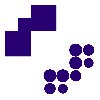
i
Apexon
Filter interviews by
Apexon Software Engineer Interview Questions and Answers
7 Interview questions
IIF (Immediate If) is a function used in programming to return one of two values based on a condition.
IIF is commonly used in SQL and programming languages like VB.NET.
Syntax: IIF(condition, true_value, false_value).
Example: IIF(x > 10, 'Greater', 'Lesser') returns 'Greater' if x is more than 10.
It simplifies conditional expressions in a single line.
Composition is a strong relationship where the child object does not exist independently of the parent object, while aggregation is a weak relationship where the child object can exist independently of the parent object.
Composition is a 'has-a' relationship, where the child object is part of the parent object.
Aggregation is a 'has-a' relationship, where the child object is not part of the parent object and can exi...
C++ exceptions are used to handle runtime errors and abnormal conditions in a program.
C++ exceptions are thrown using the 'throw' keyword.
Exceptions can be caught and handled using 'try' and 'catch' blocks.
Unhandled exceptions will result in program termination.
Example: throw std::runtime_error("An error occurred!");
Requirement traceability matrix is a document that links requirements throughout the development process.
It is used to ensure that all requirements are met and tested.
It helps in tracking the origin of each requirement and its status.
It provides a way to verify that all requirements have been addressed in the final product.
It can be created using tools like Excel or specialized software.
Example: Requirement ID, De...
A data lake is a storage repository that holds a vast amount of raw data in its native format, while a fact table contains quantitative data and metrics, and a dimension table contains descriptive attributes related to the facts.
Data lake is a centralized repository for storing structured and unstructured data at any scale
Fact table contains quantitative data and metrics for analysis, often related to business pro...
Jira bug marking scheme is crucial for prioritizing and tracking bugs.
Use priority levels (e.g. Blocker, Critical, Major, Minor)
Assign severity levels (e.g. High, Medium, Low)
Utilize labels or tags for categorization (e.g. UI, Backend, Database)
Include bug status (e.g. Open, In Progress, Resolved)
Use custom fields for additional information (e.g. Steps to reproduce, Environment)
The question covers various topics related to software development and testing.
SDLC stands for Software Development Life Cycle and is a process followed for software development.
STLC stands for Software Testing Life Cycle and is a process followed for software testing.
Agile is a software development methodology that emphasizes on iterative and incremental development.
Different types of testing include unit testing...
Apexon Software Engineer Interview Experiences
14 interviews found
(1 Question)
- Q1. Difference between composition and aggregation
- Ans.
Composition is a strong relationship where the child object does not exist independently of the parent object, while aggregation is a weak relationship where the child object can exist independently of the parent object.
Composition is a 'has-a' relationship, where the child object is part of the parent object.
Aggregation is a 'has-a' relationship, where the child object is not part of the parent object and can exist in...
(2 Questions)
- Q1. Explain about process vs thread in linux
- Q2. Explain c++ exception
- Ans.
C++ exceptions are used to handle runtime errors and abnormal conditions in a program.
C++ exceptions are thrown using the 'throw' keyword.
Exceptions can be caught and handled using 'try' and 'catch' blocks.
Unhandled exceptions will result in program termination.
Example: throw std::runtime_error("An error occurred!");
Skills evaluated in this interview
I applied via Naukri.com and was interviewed in Jan 2024. There were 2 interview rounds.
(1 Question)
- Q1. Mostly theoretical questions, on oops, .net mvc, sql
(1 Question)
- Q1. More technical based and advanced questions
- Q1. What is Callback hell
- Q2. What is IIF

(1 Question)
- Q1. Very detailed questioning on all Cs Concept
(1 Question)
- Q1. Again 1hr round with too many questions
(1 Question)
- Q1. Very poor round. First 2 rounds were taken for senior software engineer but offered software engineer post.
Interview Preparation Tips
I applied via Job Portal and was interviewed in Dec 2022. There were 2 interview rounds.
Time speed complexity stream task verbal
(2 Questions)
- Q1. Basic info about yourself, salary part
- Q2. Knowledge, English speaking test
Interview Preparation Tips
I applied via Naukri.com and was interviewed before Aug 2022. There were 3 interview rounds.

(3 Questions)
- Q1. What is a data lake, fact table and dimension table?
- Ans.
A data lake is a storage repository that holds a vast amount of raw data in its native format, while a fact table contains quantitative data and metrics, and a dimension table contains descriptive attributes related to the facts.
Data lake is a centralized repository for storing structured and unstructured data at any scale
Fact table contains quantitative data and metrics for analysis, often related to business processe...
- Q2. What is requirement traceability matrix?
- Q3. Jira important bug marking scheme
- Ans.
Jira bug marking scheme is crucial for prioritizing and tracking bugs.
Use priority levels (e.g. Blocker, Critical, Major, Minor)
Assign severity levels (e.g. High, Medium, Low)
Utilize labels or tags for categorization (e.g. UI, Backend, Database)
Include bug status (e.g. Open, In Progress, Resolved)
Use custom fields for additional information (e.g. Steps to reproduce, Environment)
(2 Questions)
- Q1. Will you come to office when asked ?
- Q2. Why do you leave the previous company?
Interview Preparation Tips
Skills evaluated in this interview
(1 Question)
- Q1. Node js questions , database questions
Interview Preparation Tips
databases, aws
I applied via Naukri.com and was interviewed before Nov 2022. There were 5 interview rounds.

Aptitude test and logical thinking is must 30 min
Good knowledge in oops concepts and any database queries
Stromg knowledge in Coding and good knowledge in sql/oracle database
(2 Questions)
- Q1. General HR discussion
- Q2. Salary discussion and Benifits discussion
Interview Preparation Tips
Focus on Basic
Focus on Oops concepts
Keep learning.
I applied via Campus Placement and was interviewed before Apr 2022. There were 4 interview rounds.

General programming and communication test
(1 Question)
- Q1. What is Object oriented programming?
- Ans.
Object oriented programming is a programming paradigm that uses objects to represent and manipulate data.
Objects encapsulate data and behavior
Classes define the blueprint for objects
Inheritance allows for code reuse and polymorphism
Examples include Java, C++, and Python
(1 Question)
- Q1. Introduce yourself
Top trending discussions






Apexon Interview FAQs
Tell us how to improve this page.
Apexon Interviews By Designations
- Apexon Software Engineer Interview Questions
- Apexon Senior Software Engineer Interview Questions
- Apexon Data Engineer Interview Questions
- Apexon Senior Engineer Interview Questions
- Apexon Software Developer Interview Questions
- Apexon Java Developer Interview Questions
- Apexon Associate Software Engineer Interview Questions
- Apexon Softwaretest Engineer Interview Questions
- Show more
Interview Questions for Popular Designations
- Software Developer Interview Questions
- Senior Software Engineer Interview Questions
- Senior Engineer Interview Questions
- System Engineer Interview Questions
- Associate Software Engineer Interview Questions
- Project Engineer Interview Questions
- Lead Engineer Interview Questions
- Software Development Engineer Interview Questions
- Show more
Overall Interview Experience Rating
based on 9 interview experiences
Difficulty level
Duration
Software Engineer Interview Questions from Similar Companies
Apexon Software Engineer Reviews and Ratings
based on 68 reviews
Rating in categories
|
Senior Software Engineer
819
salaries
| ₹12.2 L/yr - ₹22 L/yr |
|
Software Engineer
572
salaries
| ₹7.4 L/yr - ₹14 L/yr |
|
Softwaretest Engineer
255
salaries
| ₹4 L/yr - ₹9.8 L/yr |
|
Senior Engineer
247
salaries
| ₹11.8 L/yr - ₹23.1 L/yr |
|
Technical Lead
189
salaries
| ₹18.4 L/yr - ₹33 L/yr |

Xoriant

CitiusTech

HTC Global Services

HERE Technologies
- Home >
- Interviews >
- Apexon Interview Questions















